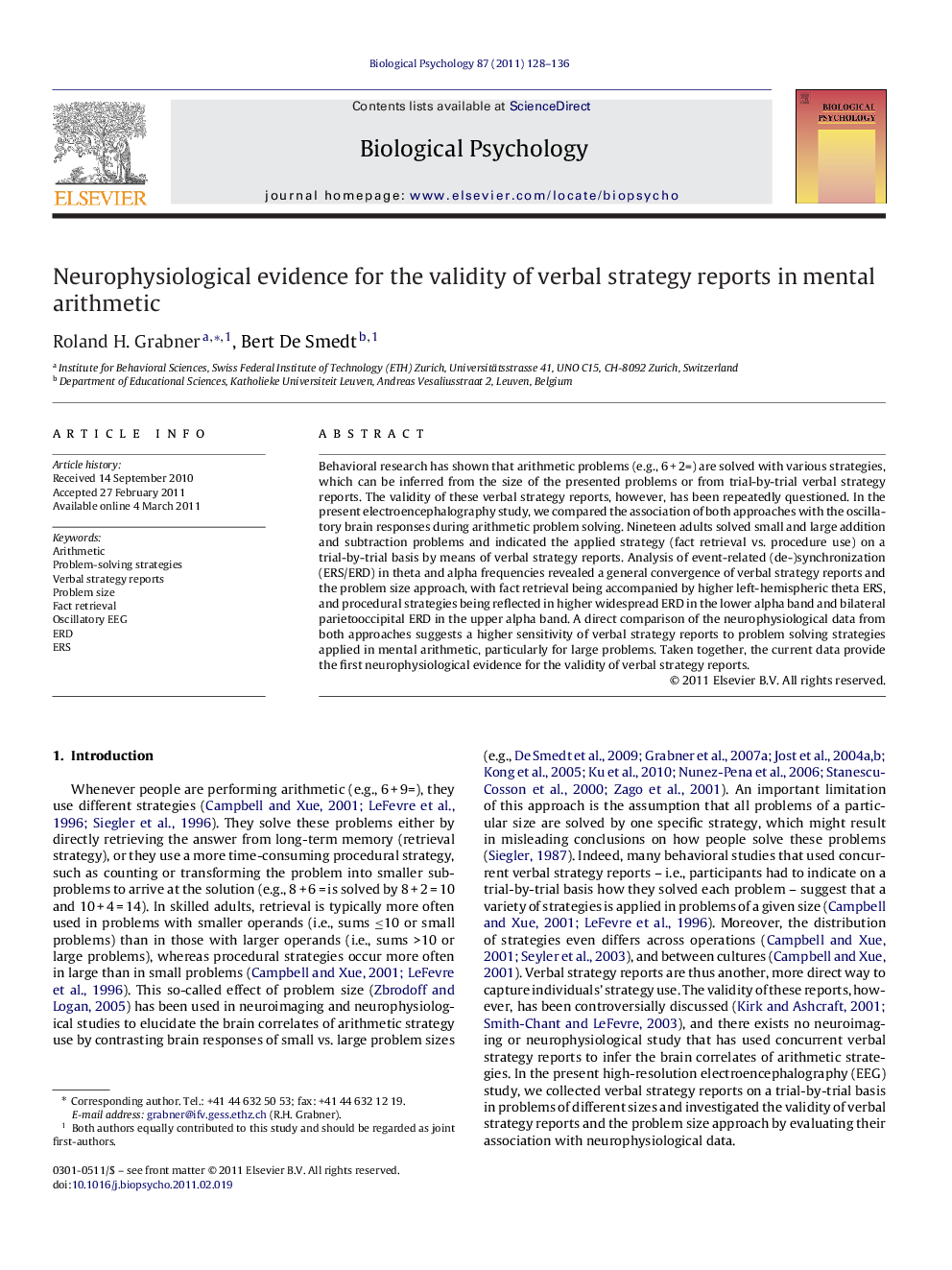| Article ID | Journal | Published Year | Pages | File Type |
|---|---|---|---|---|
| 921193 | Biological Psychology | 2011 | 9 Pages |
Behavioral research has shown that arithmetic problems (e.g., 6 + 2=) are solved with various strategies, which can be inferred from the size of the presented problems or from trial-by-trial verbal strategy reports. The validity of these verbal strategy reports, however, has been repeatedly questioned. In the present electroencephalography study, we compared the association of both approaches with the oscillatory brain responses during arithmetic problem solving. Nineteen adults solved small and large addition and subtraction problems and indicated the applied strategy (fact retrieval vs. procedure use) on a trial-by-trial basis by means of verbal strategy reports. Analysis of event-related (de-)synchronization (ERS/ERD) in theta and alpha frequencies revealed a general convergence of verbal strategy reports and the problem size approach, with fact retrieval being accompanied by higher left-hemispheric theta ERS, and procedural strategies being reflected in higher widespread ERD in the lower alpha band and bilateral parietooccipital ERD in the upper alpha band. A direct comparison of the neurophysiological data from both approaches suggests a higher sensitivity of verbal strategy reports to problem solving strategies applied in mental arithmetic, particularly for large problems. Taken together, the current data provide the first neurophysiological evidence for the validity of verbal strategy reports.
► Fact retrieval in arithmetic is accompanied by left-hemispheric theta ERS. ► Procedural strategies are reflected in bilateral parietooccipital alpha ERD. ► Verbal strategy reports in mental arithmetic are a valid research instrument.
